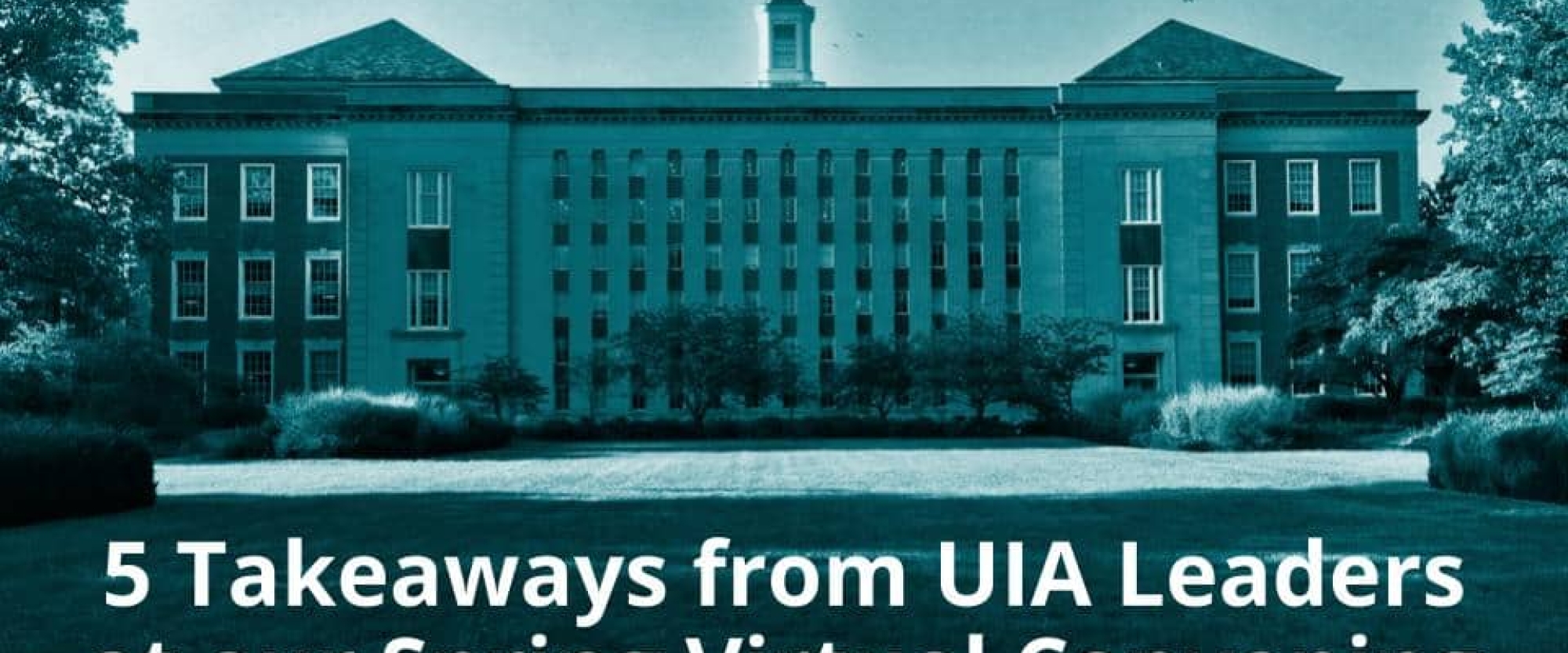Last week, 130 UIA campus colleagues and partners joined our first-ever virtual convening. The two-day online event focused on how UIA campuses are adapting their student success work amidst COVID-19, what we’re learning from our completion grants and college-to-career projects, and an array of breakout topics related to online student success, digital student engagement, analytics, and supporting vulnerable students during and after COVID-19.
While UIA convenings focus on supporting campus student success teams, this spring’s virtual format presented an opportunity to include UIA presidents and chancellors in our conversation. Presidents Michael Drake (Ohio State), Michael Crow (Arizona State), Mark Becker (Georgia State), Wendy Wintersteen (Iowa State), and Ed Ray (Oregon State) joined us for a leadership panel to discuss the current moment in higher ed and how collaboration strengthens our ability to support students.
Here are five takeaways from our leadership panel.
Collaboration really pays off in a crisis. Because we’d already practiced sharing ideas and generating solutions together, UIA institutions were better equipped to respond to COVID than we would have been working alone. Social distancing aside, no campus benefits from operating as an island at this complex and interconnected time. Established relationships, pre-existing collaborative work, and a fine-tuned tendency to turn to others rather than to turn inward all mean a well-networked campus can find itself at an advantage in moments of crisis.
Be careful of pressure to announce decisions too quickly. There’s a lot of pressure on every campus, and especially on every leader, to make final decisions quickly and bring planning to full resolution. This is unrealistic and dangerous. As information becomes available and data continue to unfold, careful and incremental steps are important. Just because everyone’s asking doesn’t mean we need to have an answer for everything right away. Rather, it’s in our students’ best interest to continue processing the best data with the right people and tools, and to move forward accordingly.
Health precautions must include mental health efforts. The proliferation of socialized fear is a real challenge. We need students and communities to be cautious; we don’t need unhealthy anxiety. Mental health is incredibly important, and even before planning for summer and fall, UIA campuses focused immediately on ensuring supportive resources for students as they process their experiences of the pandemic. Faculty and staff, too, need support and assurance - their work environments, family lives, and health precautions are different than ever before.
Leverage and learn from past emergencies. Leaders who weathered the 2008 recession and its impact on higher ed have been able to lean on experiences, processes, and structures developed during that time. It’s important to remember that in some ways, we’ve been here before. Though we’re never eager for opportunities to develop these muscles, it’s inevitable that budget reallocation, adjusting to enrollment shifts, and managing communication to students, faculty, staff, and stakeholders are all crisis response skills that improve with practice. Reflecting on past crises and learning from what did and did not work can help institutions navigate the pandemic with the benefit of a little hindsight.
Higher ed learning environments are powerful. Campus closures and social distancing have highlighted how much students really value time on campus and time together, both with peers and with faculty and staff. They are eager for connection, both digitally and, when appropriate, in person. They crave meaningful learning. The UIA has heard this directly from students, too. Some presidents shared that so far, new student yield has held steadier than predicted, and declines in international enrollment are less dramatic than they might be. Demand for higher education isn’t going away. We just need to continue to adapt to students’ needs.
Stay tuned for additional updates as we look toward our fall UIA Summit.

